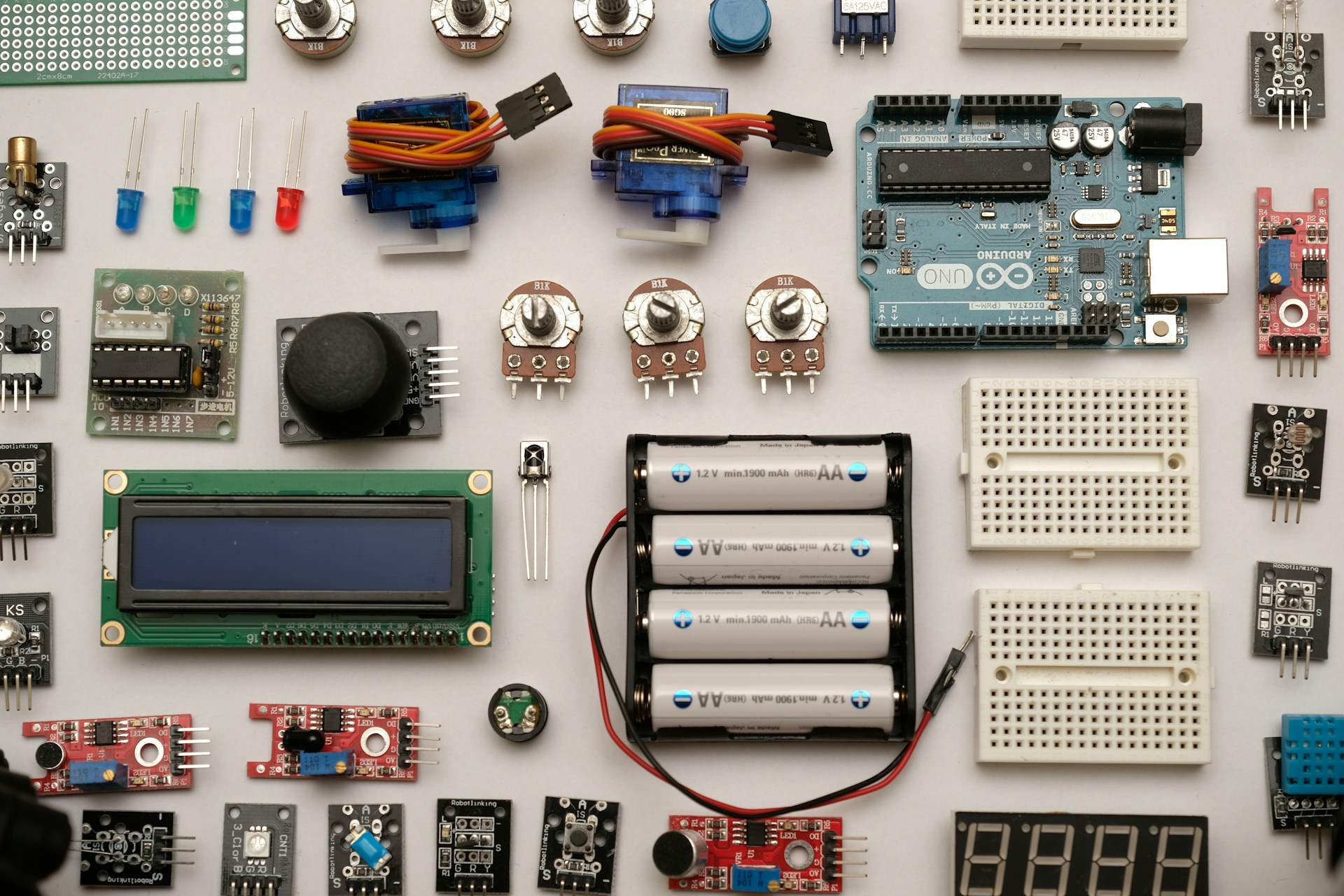Transistors are the unsung heroes in the world of electronics. These little devices deserve much of the credit for making our favorite gadgets come to life.
Whether you’re building a simple circuit or designing complex machinery, knowing which transistor to pick is vital. This guide is here to help you navigate through the types and make choices that best suit your project’s needs.
Understanding Transistors
As you may know, transistors are basically tiny gates that control the flow of electrical current in almost every electronic device we use. They can either boost a weak signal or act like a switch to turn things on and off — making them crucial for both digital and analog applications.
In a sense, transistors are the building blocks of modern society. They’re in everything from the smallest microprocessor to the largest power station. Their ability to switch and amplify electronic signals makes them indispensable, helping your devices do everything from powering up to processing data.
Innovations in Transistor Technology
Transistor technology is rapidly evolving, driven by advancements that promise greater efficiency and power control. Researchers are continuously developing materials like graphene and molybdenum disulfide, which offer superior electrical conductivity and thermal properties compared to traditional silicon.
This shift enhances the performance of transistors and opens the door to new applications in flexible electronics and high-performance computing. As we look to the future, these innovations will play a pivotal role in shaping the next generation of electronic devices, making it an exciting time for technology enthusiasts and professionals alike.
Types of Transistors and Their Applications
Transistors come in several shapes and flavors, each suited for particular tasks. Here’s a quick dive into the main types you’ll encounter:
- Small signal transistors — These are the workhorses when it comes to dealing with low-level signals. Whether you’re working on a vintage radio or a new sound system, small signal transistors amplify those tiny inputs without a sweat.
- Small switching transistors — Need a rapid response? Small switching transistors are your go-to. They handle on/off tasks very efficiently, making them perfect for applications where timing is everything, like in digital clocks or computer processors.
- Power transistors — When you need a bit more brawn, power transistors step up. They are ideal for handling high voltages and currents, which are crucial in power supplies and motor controls where managing large amounts of energy is necessary.
- High-frequency transistors — For anything that needs to keep up with high speeds, like radio frequency (RF) applications, high-frequency transistors are essential. They make sure your cell phones and Wi-Fi routers work smoothly and reliably.
- Phototransistors — Sensitive to light, phototransistors act like the eyes for your electronic circuits. They’re commonly used in security devices and automatic lighting systems, turning on when someone passes by or as the sun goes down.
Each transistor type has its niche, making it crucial to match the transistor to the job it needs to perform. On that note, let’s move on to discussing how to choose a suitable transistor for your projects and some tips on sourcing quality electronic parts.
Choosing the Right Transistor for Your Project
Finding reliable electronic parts, including transistors, is crucial for the success of any project, whether it’s DIY or something more professional. Here are some guidelines to make that selection process a little easier:
- Assess your needs — First, think about what you aim to achieve. Are you amplifying a signal? Do you need to switch the power on and off quickly? The function of your project will largely dictate the type of transistor you need.
- Consider the power and frequency—Match your transistor to your project’s power and frequency requirements. If you’re dealing with high power or high frequency, make sure the transistor can handle it.
- Read the environment — Consider where your project will operate. High temperatures and other environmental factors can affect the performance of your transistor, so choose one that can withstand these conditions.
- Look for reputable suppliers — Stick with well-known and reputable suppliers when buying transistors. This reduces the risk of getting subpar components that could fail prematurely.
- Check specifications thoroughly — Always check the datasheets for the specifications of the transistors you’re considering. Make sure they match your needs regarding voltage, current, and other parameters.
- Read reviews and seek recommendations — See what other electronics enthusiasts recommend. Online forums and review sites can be great resources for gauging the reliability and performance of specific transistor models.
Conclusion
To choose the right transistor, you need to match its capabilities perfectly to the needs of your project. This is equally true for hobbyists tinkering in their garages and professionals working on high-tech equipment.
With the right approach and a bit of knowledge, you’ll find that picking the perfect transistor is actually quite rewarding. So, dive in, experiment, and see the impact that these tiny components can make in your electronic ventures!

